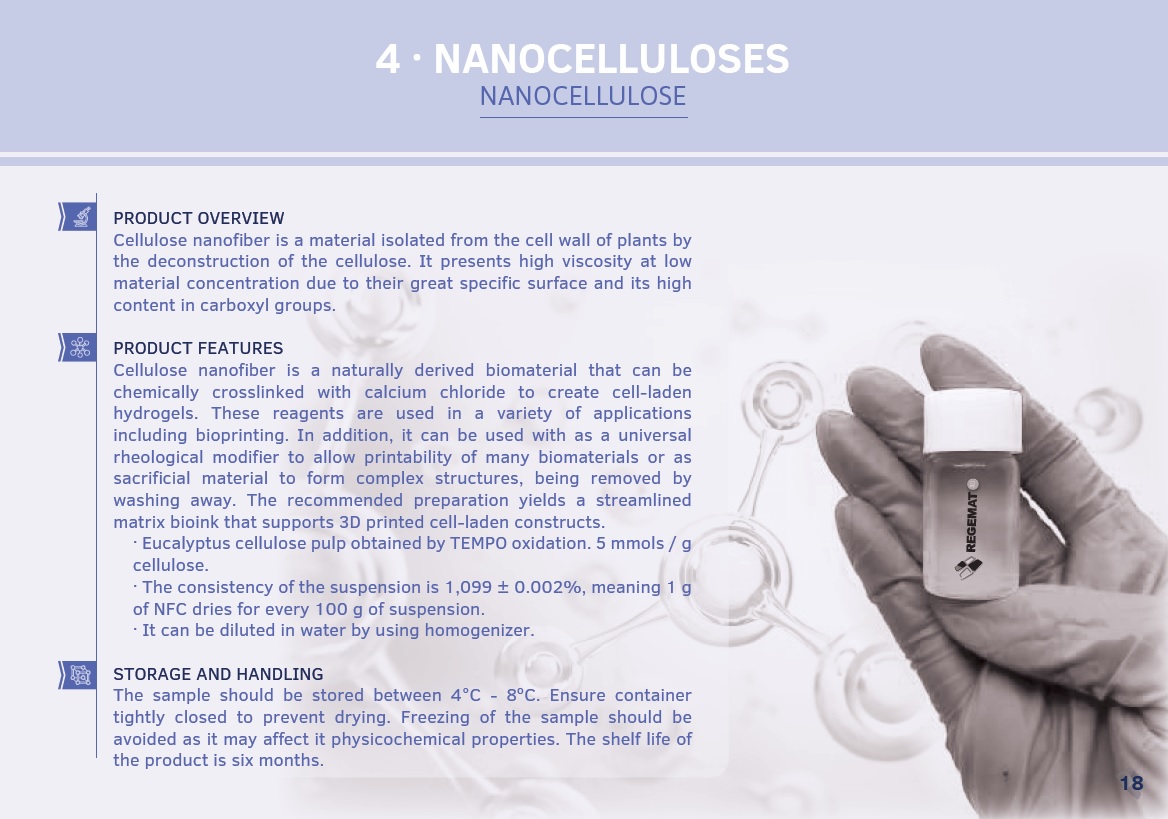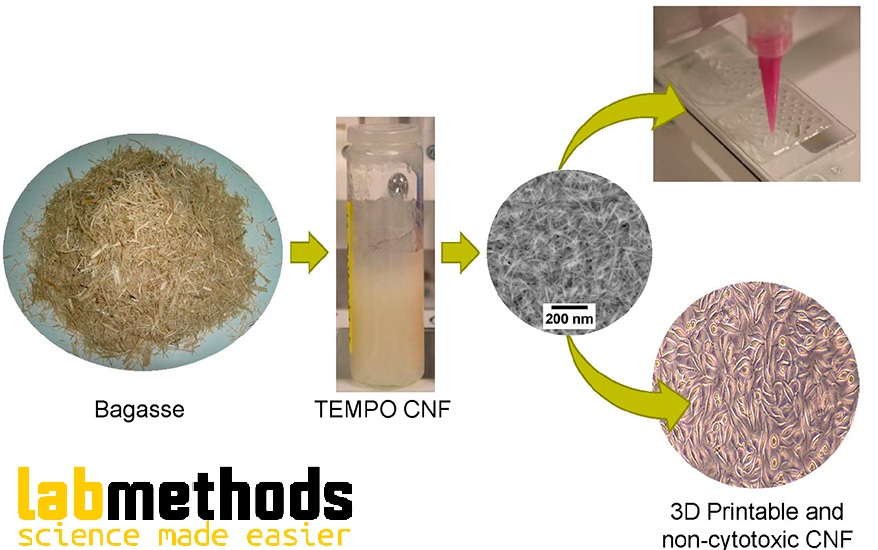CNF Nanocellulose gels (2 wt %) were used as inks for 3D printing. The 3D printing was performed with a Regemat3D bioprinter (version 1.0), equipped with the Regemat3D Designer (version 1.8, Regemat3D, Granada, Spain). Grids having a diameter of 20 mm and a height of 2 mm were printed directly on microscopy slides for exemplification purposes. The target width of the printed tracks was 0.41 mm. The target space between the tracks was 2 mm. The inks were kept at room temperature (23 °C) for 24 h before printing. The flow speed was 3 mm/sec, using a 0.58 mm conical nozzle. Digital models of an ear and a nose were used for exemplifying the printing performance of the bagasse inks. The 3D printing was performed with a flow speed of 2 mm/sec, using a 0.58 mm conical nozzle.
PRODUCT OVERVIEW
Cellulose nanofiber is a material isolated from the cell wall of plants by the deconstruction of the cellulose. It presents high viscosity at low material concentration due to their great specific surface and its high content in carboxyl groups.
PRODUCT FEATURES
Cellulose nanofiber is a naturally derived biomaterial that can be chemically crosslinked with calcium chloride to create cell-laden hydrogels. These reagents are used in a variety of applications including bioprinting. In addition, it can be used with as a universal rheological modifier to allow printability of many biomaterials or as sacrificial material to form complex structures, being removed by washing away. The recommended preparation yields a streamlined matrix bioink that supports 3D printed cell-laden constructs. · Eucalyptus cellulose pulp obtained by TEMPO oxidation. 5 mmols / g cellulose. · The consistency of the suspension is 1,099 ± 0.002%, meaning 1 g of NFC dries for every 100 g of suspension. · It can be diluted in water by using homogenizer.
STORAGE AND HANDLING
The sample should be stored between 4°C – 8ºC. Ensure container tightly closed to prevent drying. Freezing of the sample should be avoided as it may affect it physicochemical properties. The shelf life of the product is six months.


References
Chinga et al. 2018. Pulping and Pretreatment Affect the Characteristics of Bagasse Inks for Three-dimensional Printing. ACS Sustainable Chem. Eng.DOI: 10.1021/acssuschemeng.7b04440
| Number | Category | Product | Amount |
|---|---|---|---|
| 1 | - | CNF Nanocellulose | 250 gram |
